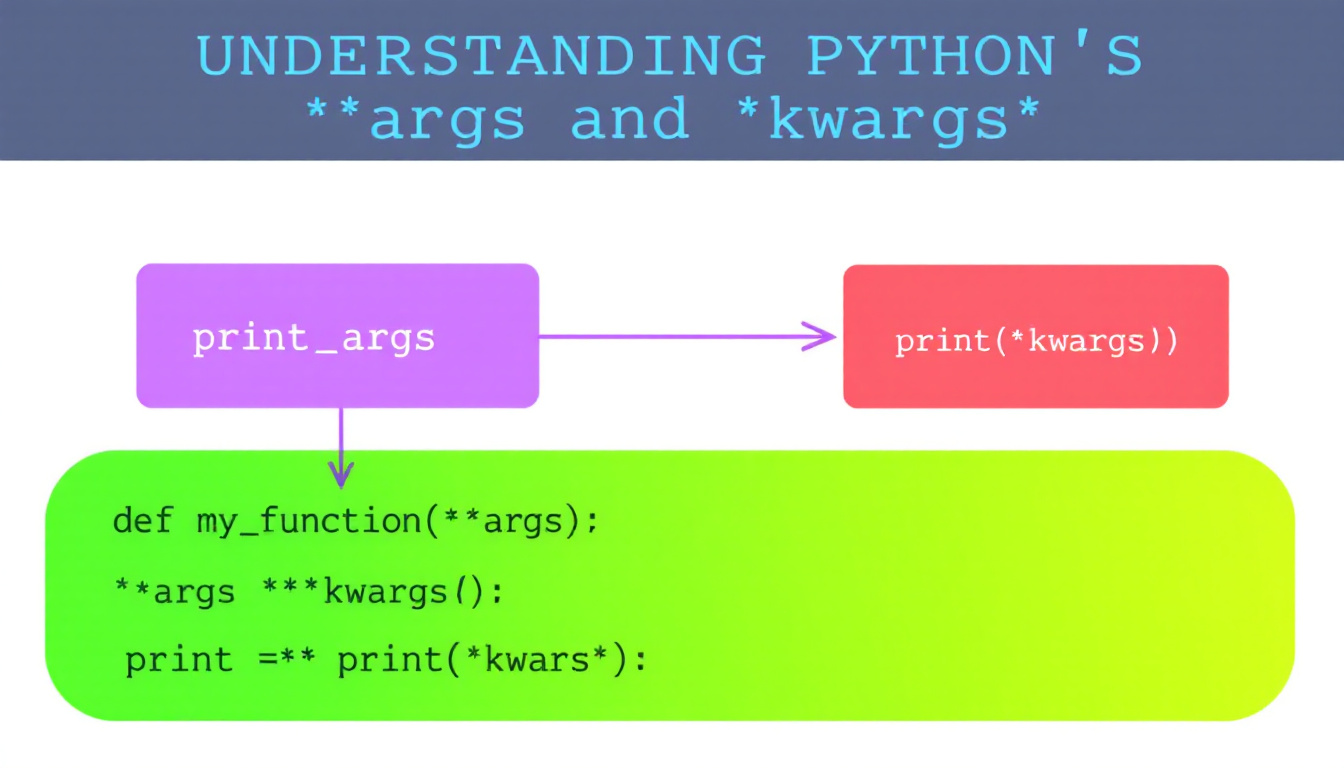Python is renowned for its simplicity and flexibility, which often comes from its ability to handle functions with variable numbers of arguments.
Two special symbols, *args and **kwargs, play a pivotal role in this flexibility.
In this article, we'll explore what these symbols mean, how to use them, and why they're so powerful.
The Basics of *args
The *args parameter allows a function to accept any number of positional arguments.
The asterisk (*) is a signal to Python that all positional arguments should be collected into a tuple.
Example of *args in Action
def greet(*args):
for name in args:
print(f"Hello, {name}!")
greet('Alice', 'Bob', 'Charlie')
Output:
Hello, Alice!
Hello, Bob!
Hello, Charlie!
Explanation:
- The function
greetaccepts any number of positional arguments. - Inside the function,
argsis a tuple containing all the arguments passed. - We iterate over
argsto print a greeting for each name.
When I first learned about *args, it felt like unlocking a new level in a video game. So much simpler to define a function.
Ready to enhance your coding skills? Check out Developer Service Blog Courses for beginner-friendly lessons on core programming concepts.
Start learning today and build your path to becoming a confident developer! 🚀
Diving into **kwargs
Similarly, **kwargs allows a function to accept any number of keyword arguments.
The double asterisks (**) tell Python to collect all keyword arguments into a dictionary.
Example of **kwargs in Action
def display_info(**kwargs):
for key, value in kwargs.items():
print(f"{key}: {value}")
display_info(name='Alice', age=30, city='New York')
Output:
name: Alice
age: 30
city: New York
Explanation:
- The function
display_infoaccepts any number of keyword arguments. - Inside the function,
kwargsis a dictionary containing all the keyword arguments. - We iterate over
kwargs.items()to print each key-value pair.
Using **kwargs has been a lifesaver when dealing with functions that require a flexible set of named parameters. It keeps my code clean and organized.
Combining *args and **kwargs
You can use both *args and **kwargs in the same function to accept all types of arguments.
Example of Combined Usage
def make_sentence(*args, **kwargs):
sentence = ' '.join(args)
for key, value in kwargs.items():
sentence += f" {key} {value}"
print(sentence)
make_sentence('I', 'love', 'Python', exclamation='!', emoji='😊')
Output:
I love Python exclamation ! emoji 😊
Explanation:
*argscollects positional arguments into a tuple.**kwargscollects keyword arguments into a dictionary.- We build a sentence by joining positional arguments and appending keyword arguments.
Mixing *args and **kwargs feels like cooking with all the right ingredients—you can adjust the recipe as you like without breaking the dish.
The Order of Parameters
When using *args and **kwargs, the order in which you place them in the function definition matters:
- Regular positional arguments
*args- Keyword arguments (those without default values)
- Keyword arguments with default values
**kwargs
Correct Order Example
This article is for paid members only
To continue reading this article, upgrade your account to get full access.
Subscribe NowAlready have an account? Sign In

